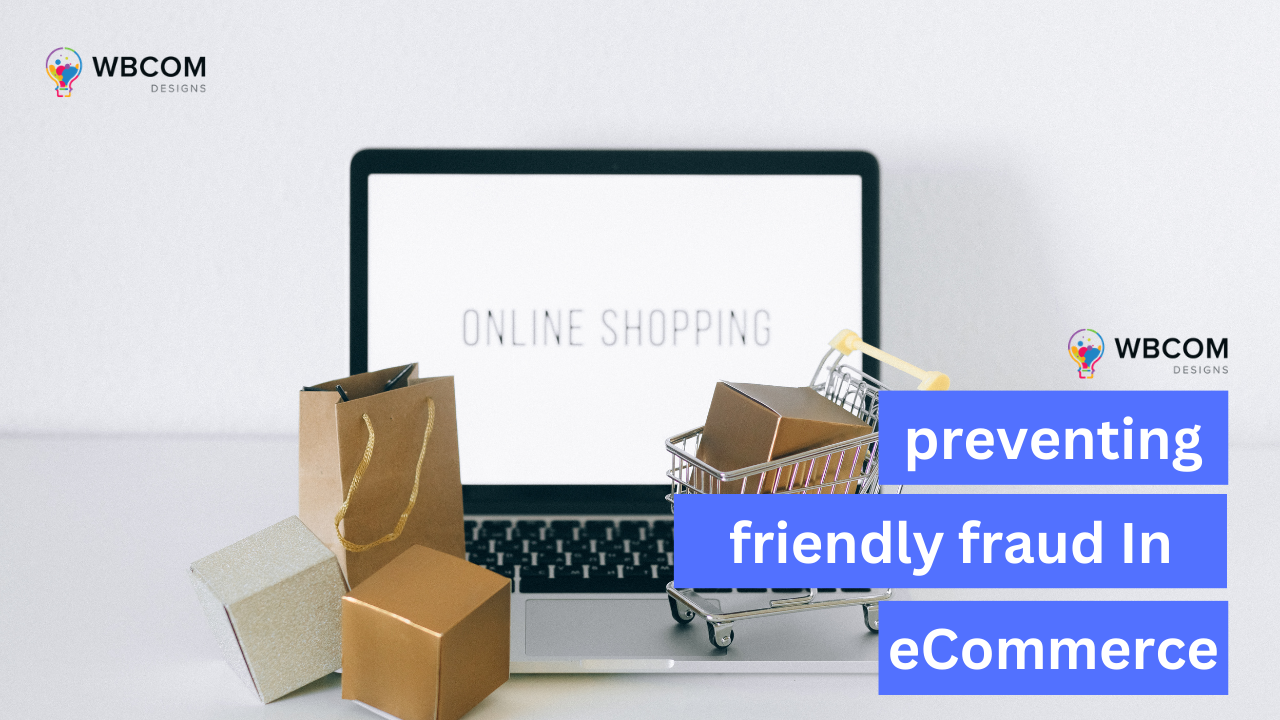Whenever we talk about fraud, most people assume that a con artist, a hacker, or a similar malicious party is performing it. This is not always the case. Sometimes, fraud comes from someone who seems completely trustworthy. The best example of this is the concept of friendly fraud in eCommerce.

Table of Contents
ToggleWhat is friendly fraud?
Friendly fraud is a legitimate purchase (no theft or breach is involved) that later gets revoked and results in a chargeback.
Chargeback is a mechanic designed to protect the customer from a mistake. The customer disputes a transaction, and they get their money back; however, there’s still a cost for the retailer.
The biggest problem is that there’s almost no way of telling if they’ve made a mistake or did it intentionally. It’s a person purchasing their account/app with their own credit card.
This is what is so problematic.
- There’s no credit card theft.
- It could be a person who previously bought from your e-commerce site.
- There’s seemingly no motivation behind it (since they usually have nothing to gain).
However, this doesn’t mean it won’t hurt you financially.
By understanding and learning how to prevent friendly fraud in e-commerce, you, as a retailer, stand to save a small fortune. Here’s what you should know!

Types of friendly fraud
Friendly fraud comes in many different shapes and forms. Generally speaking, there are two major types:
- Accidental friendly fraud: This is the so-called honest mistake. A customer makes a purchase, forgets about it, and then when they see it on their credit card statement, they ask for a chargeback. In that scenario, they are 100% convinced that they didn’t make a purchase, and it’s impossible to persuade them otherwise. The problem is that you can never know another person’s motivation with a 100% guarantee. This means that even if the instance of friendly fraud is accidental, there’s never a way of knowing it for sure.
- Intentional-friendly fraud: This is a form of refund fraud. Some people abuse your return or delivery policy. For instance, they may try to keep the item but get a refund. In some scenarios, they might even get away with it. The best example is a scenario where they claim that the ordered item never arrived. They might also say that it arrived in poor condition, etc.
Remember that your return policy may contribute to the friendly fraud rate.
- For instance, some may see this as a golden opportunity if you don’t even require a reason for returning the item.
- Another common mistake is allowing an unlimited number of times that they can return an item or request a refund. It’s unlikely that no one will come up with the idea to abuse such a system.
Again, this doesn’t mean that this will always happen, only that it could make it easier for malicious people to take advantage of it.
Understanding and tracking your customers via CRM is one of the ways to minimize the risk, but there’s so much more you should do.
Why should you prevent it?

A customer makes a mistake, demands a chargeback, and sends the item back. That doesn’t really sound that bad, right? Well, sure, but it’s not a whole story, and it’s not how it usually plays out.
Don’t let the term friendly fool you; many people do this for their gain, meaning you’ll be at a loss.
Some businesses don’t require a customer to send a product back to receive a refund. We’ve already mentioned that your return policy may encourage this behavior. In this scenario, you’re losing goods.
The problem is even greater. You see, what if you have a limited inventory? In this scenario, you’re also losing a potential sale. You’ve sent an item to someone without the intention to pay for it and are losing a legitimate customer. This puts you at a double loss.
Chargeback is a huge problem. It’s not just the value of the product. There are always fees and penalties involved. In general, the cost can be quite high, and it’s completely unnecessary.
Keep in mind that all of this requires more work on your part. Your employees must work hours to solve these problems, directly increasing operational expenses.
In some scenarios, the customer will require an additional refund. This usually happens if you’re too slow with processing the chargeback, but some try to get as much money as possible. So, they dispute the purchase with both the bank and the retailer. This way, the retailer eventually suffers double-refund chargeback.
To put the icing on top, the fact that they’ve scammed you doesn’t mean they won’t also write a negative review. In the minds of some of these fraudsters, this further legitimizes their effort and puts you off track.
Also Read: Ways To Protect Your Ecommerce Store
How to spot it- friendly fraud in eCommerce

Some indicators are quite telling when we talk about recognizing a friendly fraud. They can put you on the right trail even if they aren’t proof. For this, you need strong data analytics software.
An order that’s much larger than normal is usually a sign of friendly fraud. Now, there are two ways to define normal. It can be much larger than is usual for an average customer. It can be much higher than is usual for a first-time customer. Lastly, it may be much higher than all the previous purchases from that customer.
If a person spends $10-$50 per purchase and then suddenly places a $500 order, this raises some eyebrows. Again, it doesn’t mean anything is wrong, but if they suddenly decide to demand a chargeback, you may want to be on your guard. Gather evidence, prepare your case, and dispute the chargeback with the bank.
An unusually high frequency of orders can also be suspicious. If a person makes too many orders in a short sequence without previous history, you may have to be on your guard.
Some items are more commonly stolen than others. Naturally, you need to be extra careful with these items.
One more thing to note is that friendly fraud, on average, takes 40% longer for a customer to report.
You should always watch out for some of these factors, but when they start appearing together, this is where you have a situation to watch out for. Everyone can place a large order, increase the frequency of orders, etc.
The main thing to keep in mind is that just because it sounds suspicious, it doesn’t mean that it is. People make mistakes, forget things, and sometimes act randomly. Requiring chargeback is inconvenient, but many customers also consider it a last resort.
Also Read: Reducing eCommerce Fraud with Identity Verification Solutions
Tips to stop friendly fraud
Fortunately, according to this guide to stop friendly fraud, there’s so much you can do to reduce the potential impact of this problem.
There are few old-school methods of dealing with friendly fraud. For instance, you can:
- Improve communication with your customers and make it easier for them to contact you. This way, they won’t have to go to the bank instead of talking to you first. This will also allow you to figure out how sincere they are.
- There’s a line of questions that you can use to determine the problem. For instance, there’s a concept of family friendly fraud. Someone else could have placed an order if a card is shared among several family members. By asking this question, you can potentially resolve this issue as simplest as possible.
- Be very careful when wording your refund policy. We’ve already discussed the potential consequences of this.
- Roll with the punches. Try disputing some chargebacks. We’ve already mentioned that some chargebacks are malicious, so why not fight back?
- Ask that they sign when they are delivered the product.
The software also has a more sophisticated way of handling these issues. Some tools are specially designed for this. They come with everything that can help keep your e-commerce business safer. These are the methods:
- Digital footprinting
- Record keeping
- Suspicious behavior pattern recognition
- Monitoring repeat offenders
- Assistance in evidence gathering
The reason why this is a novelty in the world of fraud prevention is the computing power required to do so accurately. Now, these tools are becoming more sophisticated and reliable with all the breakthroughs in AI technology and machine learning.
Remember that this type of fraud tends to be incredibly complex to recognize. Without reading one’s mind, we’ll never be able to figure it out with 100% reliability.
Understanding this type of fraud will help you avoid it
There’s nothing friendly about a friendly fraud. It’s near-impossible to prove, and if you’re mistaken, you risk losing a long-term customer. Still, since the costs are so great, you just can’t afford to make an effort.
So, get familiar with the topic as much as possible, find tools to analyze customer behavior to get some early alerts, and dispute suspicious chargebacks. Other than that, there’s not much you can do. Still, when done right, this is more than enough.
By Srdjan Gombar

The veteran content writer published author and amateur boxer. Srdjan is a Bachelor of Arts in English Language & Literature and is passionate about technology, pop culture, and self-improvement. His free time he spends reading, watching movies, and playing Super Mario Bros. with his son.
Interesting Reads:
Are My Ad Campaigns Affected By Fraud? Here’s How To Find Out







